February itinerary in Japan Day 5 (Tottori, Shimane Meal ed.)
(Sunday, February 27)
Table of contents
1. Ekiben / Gozaemon Bento
I bought the ekiben “Gozaemon Bento”, “Tofu Chikuwa”, and “Ago-noyaki” and ate them on the train from Yonago Station to Shinji Station. Originally, there was an ekiben sales place inside Yonago Station, but it closed in September 2020 due to the renovation work of the Yonago Station building. Now, tourist buy ekiben at “Souvenir Rakuichi”, which is a little outside of Yonago Station.
“Gozaemon Bento” (Yen 1,400) is a luxurious bento that contains Sanin’s famous Gozaemon sushi, Daisen Okowa, and crab chirashi-zushi. Gozaemon sushi is pressed sushi made with mackerel, conger eel, and crab, etc. Gozaemon Sushi is a famous pressed sushi that is also sold at Tokyo Station, Kabukiza Theater in Tokyo, and Nihombashi Mitsukoshi Main Store. “Gosaemon Bento” contained two mackerel sushi. It was a very delicious mackerel sushi.

“Daisen Okowa” is a vegetarian dish that was served by people who trained in Daisen, and the Okowa of Daisenji has spread to the home. Okowa is glutinous rice steamed with some ingredient. It had a gentle taste with a soy sauce flavor containing chestnuts. It has been selected as “Our Regional Cuisines” by the Ministry of Agriculture, Forestry and Fisheries.
“Tofu Chikuwa” and “Ago-noyaki” that I bought with “Gozaemon Bento” are also selected as “Our Regional Cuisines” by the Ministry of Agriculture, Forestry and Fisheries. In addition, “Ago-noyaki” has been selected as one of the “100 Best Local Cuisine” by the Ministry of Agriculture, Forestry and Fisheries.

As the name suggests, “Tofu Chikuwa” is a chikuwa made from tofu. It is a unique processed food found in Tottori prefecture in Japan. It is made by mixing firm tofu and minced white fish at a ratio of about 7: 3 and steaming it. Since the proportion of tofu is high, the color is almost pure white. It was tofu, so it was very delicious when eaten with soy sauce. I like tofu, so I prefer “Tofu Chikuwa” to ordinary chikuwa.
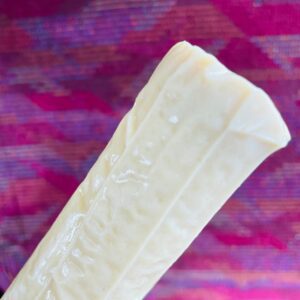
“Ago-noyaki” is a dish that is seasoned with surimi of “flying fish” and squeezed into a stick to bake. The raw materials for ordinary chikuwa are Alaska pollack, sharks, and atka mackerel, but “Ago-noyaki” is made from flying fish. Originally, the difference between “Ago-noyaki” and “Ago-chikuwa” is the size. “Ago-noyaki” is said to be 70 cm long and weigh more than 1 kg if it is large. However, the souvenir “Ago-noyaki” I bought was about 20 cm long, although it was larger than the chikuwa. However, it was very voluminous and difficult to eat.
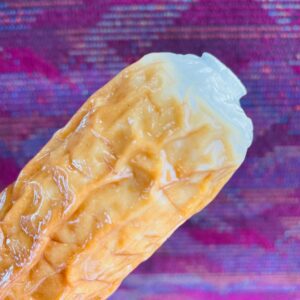
2. Oku Izumo soba Ippuku
After walking around Matsue, I ate “Izumo soba” at Ichibata Department Store “Ippuku” near Matsue Station for a late lunch before going to Yuushien. “Izumo soba” is one of the three major soba noodles in Japan (the other two are Wanko soba and Togakushi soba). It is said that “Izumo soba” began when Naomasa Matsudaira, the first feudal lord of the Matsue domain, brought a soba craftsman from Shinano when he changed his country from the Matsumoto domain in Shinano province. Warigo soba is a common way to eat Izumo soba, which is made by serving boiled soba in a round lacquer ware.
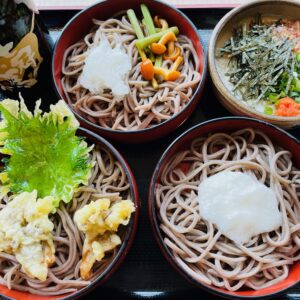
As I wrote in the BLOG on March 15, the origin of “Izushi soba” in Hyogo prefecture is similar to that of “Izumo soba”. It is said that “Izushi Soba” began when Masaaki Sengoku, who was transferred from the Ueda Domain in Shinano Province to the Izushi Domain in Tajima Province, brought in a soba craftsman. “Izushi soba” has many similarities to “Izumo soba”, such as serving it on a small plate of Izushi ware. Matsumoto Station and Ueda Station are only about 50km away. Therefore, it can be said that “Izumo soba” and “Izushi soba” are like brothers.
“Izumo soba” of “Ippuku” was very delicious soba. It was a soba that goes well with the local sake “Seven Crown Horse” in Shimane Prefecture.
“Izumo soba” has been selected as one of the “100 Best Local Cuisine” by the Ministry of Agriculture, Forestry and Fisheries.
3. Sasakiya
Before going to the bus stop heading to Yuushien, I had about 10 minutes before the bus departed, so I drank Matsue’s craft beer “Beer Hearn” at Sasakiya. Sasakiya is a souvenir shop in the station building of Matsue Station, but you can drink local sake and craft beer while standing. The beer I drank this time was “Beer Hearn” pale ale. It was a beer with just the right bitterness and it was very delicious. After drinking beer, I got on the bus at the right time.
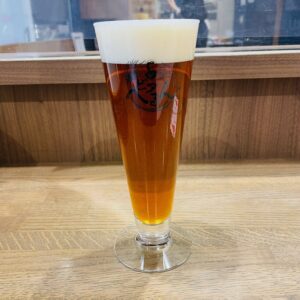
The name of the Sasaki seems to be a rare name found in dozens of cases in Shimane and Tottori prefectures.
4. Hinoya Curry x LA BAR
After visiting Yuushien, I took a taxi to Yonago Kitaro Airport and had dinner. Only “Hinoya Curry x LA BAR” was open out of the three restaurants at Yonago Kitaro Airport, due to the decrease in users due to the new coronavirus. Therefore, I had no choice but to eat fried food and curry.
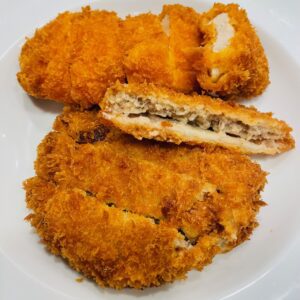
Originally, at Yonago Kitaro Airport, there is also a tavern called “Robata Kaba” and a Chinese noodle shop called “Hechikan”. However, I was really disappointed that only “Hinoya Curry” is open. Because the head office of “Hinoya Curry” locate in Tokyo. Even though I came to the Sanin region for a trip, I didn’t think that the last meal would be a non-local meal. I think Yonago Kitaro Airport should properly understand the needs of tourists and business travelers. Few people would want to go on a trip or business trip and bother to eat curry from a national chain.
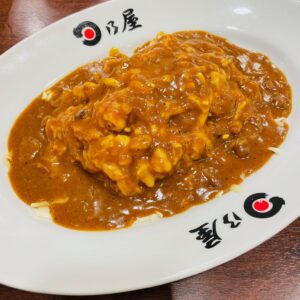
I took an airplane from Yonago Kitaro Airport to Haneda Airport and returned to Tokyo. The last meal was really disappointing.
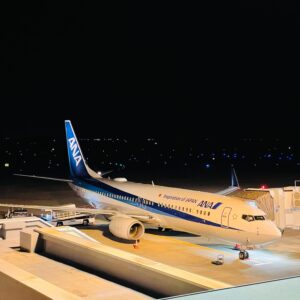
Note: The departure / arrival times, fares of transportation, admission fees, meal fees, etc. listed in the text are as of the time of writing the BLOG. Please check for yourself when you go on a trip as it may change in the future.